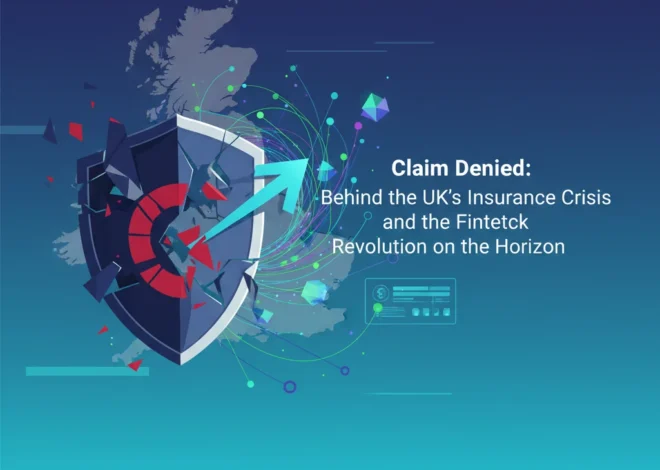
The Gatekeeper’s Gambit: Inside the £32M Lawsuit That Could Shake the Foundations of Fintech
The collapse of London Capital & Finance (LCF) in 2019 was a watershed moment in the UK’s financial landscape, a stark reminder of the devastating human cost of regulatory failure and corporate malfeasance. Over 11,000 investors, many of whom were retirees and small-scale savers, lost a collective £237 million after being lured into purchasing high-risk “mini-bonds” deceptively marketed as safe, ISA-like products. While the initial shock has subsided, the aftershocks continue to reverberate through the courts, and the latest tremor is a £32 million lawsuit that could redefine the responsibilities of a crucial, yet often overlooked, part of the financial ecosystem: the payments provider.
Administrators for LCF have filed a high-stakes legal claim against GC Partners (GCP), a payments and custody provider, alleging it “dishonestly assisted” LCF’s directors in a “massive fraud.” This lawsuit isn’t just about clawing back money for wronged investors; it’s a direct challenge to the role of intermediaries in the modern world of finance and fintech. It poses a critical question: When does a service provider cross the line from a neutral facilitator to an active enabler of financial crime?
A Refresher: The Anatomy of the LCF Scandal
To understand the gravity of the lawsuit against GCP, we must first revisit the LCF scandal itself. London Capital & Finance presented itself as a stable investment firm, offering fixed-rate ISAs and bonds with attractive returns of up to 8%. Through aggressive and misleading marketing, it successfully convinced thousands of ordinary people to part with their life savings.
The reality, however, was a house of cards. The money raised from investors was not placed in a diversified portfolio of secure ventures as promised. Instead, administrators allege it was funneled into a small, interconnected group of speculative and often failing companies controlled by a handful of individuals connected to LCF. The funds were used for purposes that had little to do with legitimate business, including purchasing a helicopter, a horse, and covering personal expenses.
The collapse exposed significant regulatory gaps and led to a scathing independent review that criticized the Financial Conduct Authority (FCA) for its failure to act sooner. But as regulators work to patch the holes in the system, the administrators are pursuing a different path to justice: holding the entire supply chain accountable.
Shell's Stock Surge: A Deep Dive into the Q4 Update Fueling Investor Optimism
The £32 Million Allegation: A Failure of Due Diligence?
This brings us to GC Partners. According to the lawsuit filed by administrators Smith & Williamson, GCP acted as the primary payment and custody provider for LCF. It was the gateway through which nearly all of LCF’s investor funds flowed. The administrators’ claim, as reported by the Financial Times, is that GCP had a duty to conduct proper checks on these transactions and that the evidence of fraud was “blindingly obvious.”
The legal claim centers on the concept of “dishonest assistance,” a tort where a third party can be held liable for helping a trustee or fiduciary breach their duty. The argument is that GCP knew, or turned a blind eye to the fact, that LCF’s directors were misusing investor funds. The lawsuit alleges that GCP processed large, unusual payments to a small circle of individuals and their companies without adequate scrutiny.
To illustrate the flow of money at the heart of the dispute, the administrators’ claims outline a clear pattern of misappropriation. The table below provides a simplified summary of the alleged transactions that GCP processed.
| Source of Funds | Intermediary | Alleged Recipient/Entity | Alleged Purpose of Funds |
|---|---|---|---|
| LCF Investor Deposits | GC Partners | Companies linked to LCF directors (e.g., Simon Hume-Kendall, Andy Thomson) | Personal loans, property investments, luxury purchases (e.g., a helicopter) |
| LCF Investor Deposits | GC Partners | Elten Barker & Spencer Golding | Funding for personal and business ventures unrelated to LCF’s stated investment strategy |
| LCF Investor Deposits | GC Partners | Various high-risk, speculative ventures | Circular loans designed to pay “interest” to early LCF investors, creating the illusion of a profitable scheme |
The administrators contend that any reasonably competent financial services firm would have identified these transactions as red flags. The concentration of payments to a few connected entities, the lack of commercial justification, and the sheer scale of the fund movements should have triggered enhanced due diligence and, ultimately, a refusal to process the payments. GCP’s failure to do so, they argue, makes it liable for the £32 million that passed through its accounts and was subsequently lost.
Unpacking the .6bn Deal: HSBC's Bold Move to Delist Hang Seng Bank
The LCF administrators are arguing for the latter. They are effectively saying that you cannot claim to be a simple, neutral “pipe” for money while ignoring clear signs that the pipe is being used to facilitate a crime. This case could set a powerful precedent, forcing fintech and payment firms to move beyond basic KYC (Know Your Customer) checks and invest more heavily in KYT (Know Your Transaction) monitoring. Ironically, this is an area where technologies like blockchain promise greater transparency, creating an immutable ledger of transactions. The opaque, trust-based system LCF exploited is precisely what many in the financial technology space are trying to replace. The outcome of this case will be a crucial data point for the future of compliance and liability in the digital economy.
The Ripple Effect: Why This Case Matters for Finance, Fintech, and Investors
The legal battle between LCF’s administrators and GC Partners is more than a corporate dispute. Its outcome will have far-reaching implications for several key groups.
For Investors and the General Public
This case is a stark reminder that the financial system’s integrity relies on a network of gatekeepers. For those engaged in investing, it underscores the importance of scrutinizing not only the company you invest in but also the ecosystem it operates within. It’s a cautionary tale that highlights the hidden risks in an increasingly complex financial world. A successful claim could also mean a more substantial recovery for the thousands of victims, offering a small measure of justice.
For the Fintech and Banking Sector
This is a potential landmark case for any company involved in payments, custody, or financial intermediation. A ruling against GCP would signal that courts are willing to extend liability to third-party providers who fail to act on red flags. This could force a sector-wide re-evaluation of risk and compliance frameworks. Firms may need to:
- Invest in Advanced Monitoring: Move beyond simple, rules-based transaction monitoring to more sophisticated, AI-driven systems that can detect unusual patterns of behavior.
- Redefine Compliance Roles: Compliance can no longer be a simple box-ticking exercise. It must be an active, investigative function with the power to halt suspicious activity.
- Price for Risk: The cost of providing payment services may increase to cover the enhanced compliance burden and potential legal liability. This could impact the business models of many lean fintech startups.
This case puts the entire “as-a-service” model in banking and fintech under the microscope, demanding a higher standard of care from all participants.
Beyond the Tweets: Analyzing the Financial Fallout of Elon Musk's 8M Executive Settlement
For Regulators and the Broader Economy
While the FCA is working to tighten regulations post-LCF, this civil case explores a different enforcement avenue. It suggests that the courts can act as a powerful backstop, enforcing standards of professional conduct even where specific regulations may be lacking. It reinforces the principle that participating in the financial markets comes with an inherent responsibility to act with integrity. A healthy economy depends on trust, and this lawsuit is fundamentally about whether that trust was broken by more than just LCF’s directors.
Conclusion: A New Standard for Financial Gatekeepers?
The lawsuit against GC Partners is a critical chapter in the long and painful LCF saga. It seeks not only to recover lost funds but also to establish a vital principle: in the intricate web of modern finance, ignorance is not a defense. The administrators are betting that the courts will agree that a financial gatekeeper has a duty to see what is in plain sight.
As the case proceeds, fintechs, banks, and payment processors across the globe will be watching closely. A victory for the administrators could usher in a new era of heightened responsibility, forcing the technological vanguards of the financial industry to also become its most vigilant guards. For the 11,000 investors who lost everything, it represents a hope that accountability might extend beyond the architects of the fraud to those who allegedly held the door open for them.


